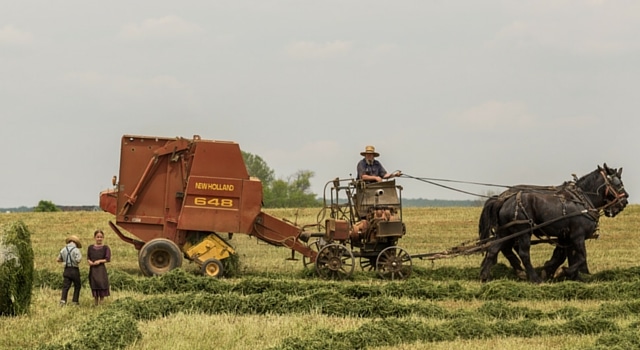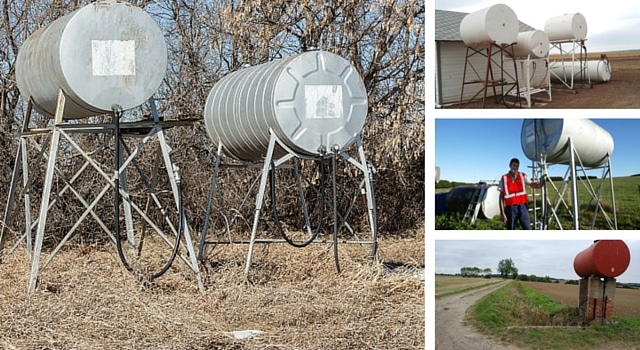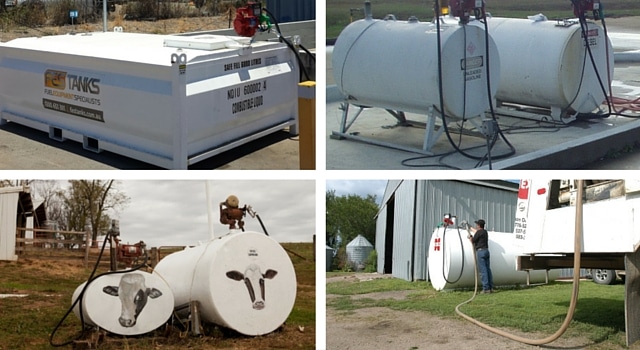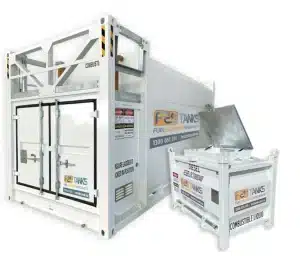Need to upgrade your farm fuel tanks?
Farm fuel tanks are crucial for a successful harvest. Their functionality gives farmers the ease to operate all year round. .
That means the type of tank you choose ultimately depends on several factors including how much fuel you use, the geographic location of your farm, transport – how expensive it is, how regularly tankers deliver to your area, the size of your property and more.
We want to give you some insight into the different fuel tanks within the farming and agricultural sectors and how they suit different business needs. So what are the different types of farm fuel tanks available?
Above-ground tanks on a tripod stand
These are best suited to farms with lower fuel usage with an average capacity of 1250 litres to 2000 litres.
Advantages:
In the past, many of these tanks were supplied by the oil companies so there was virtually no installation cost. This meant that farmers already had a storage solution in place for their fuel. Alongside that, no electric pumps are needed because a gravity feed can dispense fuel making access incredibly easy. Bunding also isn’t required because smaller-sized tanks fall below environmental legislation for fuel containment.
Disadvantages:
Traditionally, tripod tanks were accessed from the top which made safety when refilling an issue. As a driver must have three points of contact when refilling a tank, standing on a ladder while holding a nozzle was no longer an option when workplace health and safety regulations were tightened.
To solve this problem, many farmers had their tanks converted to bottom loading. At the same time, farmers installed gauges in the form of a piece of clear tubing running down the side of the tank making it easy to check fuel levels.
On top of that, tripod stability can also be an issue. Above-ground tanks are not ideal in areas prone to severe weather events like cyclones. This is because they could topple the tank or cause erosion leading to structural instability. Therefore, tripod stands must to be tied down securely in areas prone to high winds.
On-Ground tanks
On-ground tanks aren’t limited by a support structure so space and fuel use are the major limitations on their ultimate size. Environmental regulations say tanks over 4000 litres need to be protected by some form of bunding in case of leakage or rupture. This means on-ground tanks can be single-wall or self-bunded. They generally take a cylindrical, rectangular or square form.
Advantages:
- There’s no need to bother with tank stands. Having a larger capacity also means reduced transport costs.
- With self-bunded tanks, there’s no need to spend time and money building a bunding structure. Typically, buying a self-bunded tank works out at about half the cost of using a single-wall tank and building a bund. Fully portable self-bunded tanks are also available in sizes up to 18,000 litres and can be easily carried to different locations on large properties with the product in them.
- These tanks also offer a higher level of built-in security. Because they require a pump to dispense the fuel, power to the pump can be switched off when the tank is not in use to stop potential thieves. Tanks can also have a lockable hatch across all access points that can be secured with a heavy padlock when the tank is not in use.
Disadvantages:
Single-wall on-ground tanks need to be located within a concrete bund that will contain fuel spills. This means extra work and reduces the portability of the tank. The bund also needs to be maintained and drained after rain to ensure it is capable of carrying the tank’s full capacity in case of a spill.
Underground tanks
These are an economical option for farms that need an on-site storage capacity of 10,000 litres or more.
Advantages:
- For farms that are storing petroleum, underground tanks can save them losses in product and sales. This is because they reduce the loss of fuel through evaporation – a significant problem when storing petrol above ground.
- The size of underground tanks also means farms can reduce transport costs as they hold much higher levels of fuel.
Disadvantages:
- When storing diesel, condensation tends to be a bigger issue in underground tanks. To minimise this problem, it’s advisable to run the tanks at a minimum of 70-80% of capacity to minimise the air space above the fuel level.
- It’s particularly important when storing fuel underground to use a water-finding paste once a week so that water collecting below the fuel can be pumped out.
- Long-term storage of diesel fuel can lead to contamination by fungal microbes. Fuel treatments such as diesel biocides also help prolong the fuel’s shelf life.
Finding the right farm fuel tank
Finding the right farm fuel tank can have a huge impact on how your business runs throughout the year. Not only does it improve the efficiency of your business but finding the right tank also improves how well the fuel is used, preserved and kept safe all year round. That’s why finding the right farm fuel tank is a must for anyone involved in the modern farming industry today.







9 Comments
How much for a 5000lt on ground stand
Robert,
Not as simple as giving a price on a straight self bunded ground tank as our tanks need pumping system in place as well. We build out pump systems to suit your requirements.
Have a read of this article to help explain the situation – https://www.festanks.com.au/blog/typical-sales-conversation-structure/
After that give us a call to chat it through.
am looking for a quotation for farm diesel tanks 2200 l with stand
Drop a message in our contact us page with the specifics of your details and we will review.
Really helped me on a worksheet I had to do in class for agriculture about sustainability
Glad to help Mitchell. Now pass those exams and graduate with honours.
Require a 4500 litres or 2 x 2500 litres tank for parafin storage.
I am urgently looking for the same capacity ie 2200 Litres of diesel tank, overhead mounted
[…] theft harder with features like lockable hatches that prevented access to the valves. Refer to this extensive guide on farm fuel tanks to understand the pros and cons of each […]
Comments are closed for this article!